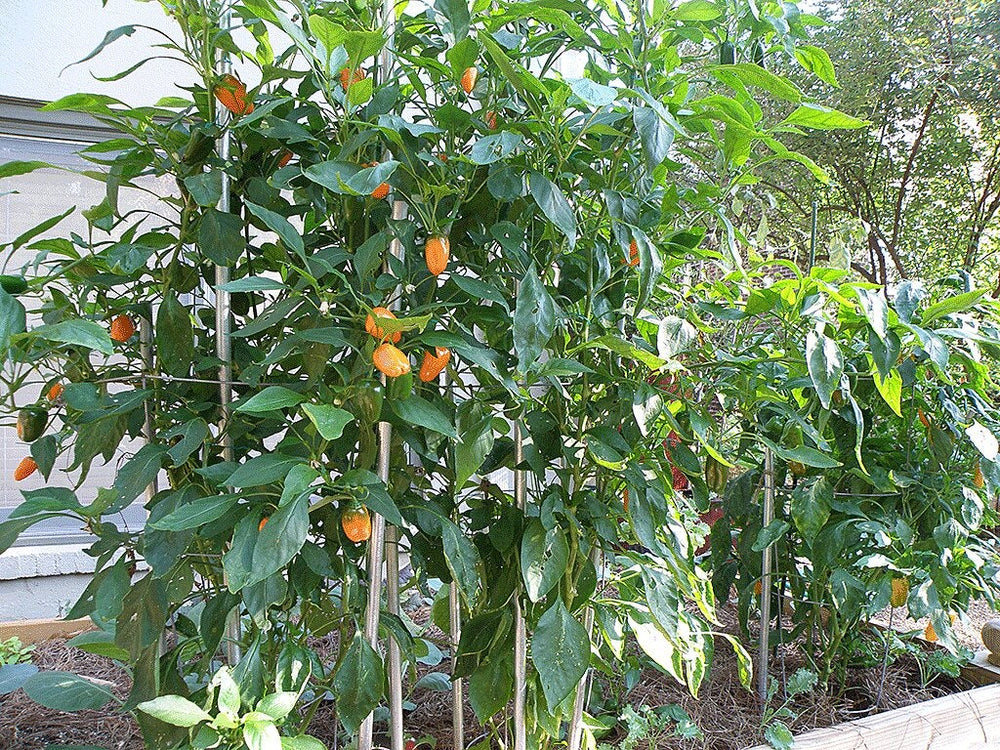It's often a good idea to stake pepper plants. Although many peppers are strong plants that do a good job at holding themselves upright, sometimes they need a little help — especially toward the end of the season. If you live in an area in which the growing season is long, peppers tend to grow taller (sometimes three or more feet) than they would otherwise. Also, in places prone to thunderstorms, a good wind or strong rain can quickly level a pepper-laden plant that hasn't been staked properly. Finally, varieties that produce large peppers appreciate the extra support under the weight of their bounty.
To stake pepper plants, simply drive a 2- to 3-foot wooden, bamboo, or other sturdy-material garden stake at least 6 inches deep into the soil right beside each plant. While the best time to do this is when you set out the plant, so that the roots aren't disturbed later, it's okay to stake the plant later in the season, if needed. Tie the stems to the stakes with soft twine or strips of old nylon stockings to avoid cutting into or scarring the stems. (You can also support a pepper plant by surrounding it with a small wire tomato cage.)
Note, too, that as pepper plants grow and begin to yield large amounts of fruit, long branches may start to sag toward the ground. Since many plant diseases live in the soil, you want to do everything you can to keep those branches (and the fruit they bear) from touching the ground. Putting a stake underneath the branch to hold it up is an easy way to do this.





 Herbs
Herbs
 Vegetables
Vegetables
 Fruit
Fruit
 Flowers
Flowers
 Succulents
Succulents


